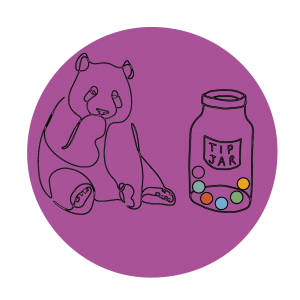What are Transition Towns?
Welcome to Totnes, one of the oldest boroughs in Devon, the U.K. It boasts a Norman castle, vineyard, market, and high street studded with little shops. It has been called charming, a “hippie haven,” “Narnia,” a “quaint little tourist gem,” but most proudly, since 2005.
The world’s first Transition Town.
What is a Transition Town?
A local community proactively engaged in changing the way it lives in response to
- Economic Instability
- Peak oil
- Climate Change
Why?
Because the world is warming up, and our dependence on fossil fuels is not sustainable. Our economic structure, growth driven, clearly cannot keep growing forever. Because the forecast for our planet is gloomy and apocalyptic. Because we got it wrong.
So how do we fix it?
We start by imagining: What would it look like if we did?
Permaculture designer and professor Rob Hopkins asked this question to his students at Kinsale Further Education College in 2004. Responses varied by situation and location, but the general vision was:
“Self-sufficiency at the local level, in food, energy, and much else.”
A network of strong, connected, self-sufficient communities then.
The question that follows is:
How do we create those?
With small, transitional steps made by ordinary people, working together:
Small actions, small people. Big change.
Transition Initiatives are based on four key assumptions:
- That life with dramatically lower energy consumption is inevitable, and that it’s better to plan for it than to be taken by surprise.
- That our settlements and communities presently lack the resilience to enable them to weather the severe energy shocks that will accompany peak oil.
- That we have to act collectively, and we have to act now.
- That by unleashing the collective genius of those around us to creatively and proactively design our energy descent, we can build ways of living that are more connected, more enriching and that recognize the biological limits of our planet.”
– Rob Hopkins, The Transition Handbook: From Oil Dependency to Local Resilience
These steps toward sustainable living and local ecological resilience come in the form of creative adaptations in a number of different spheres:
Transportation: bikes, carpools, and buses that run on clean energy.
Food: locally grown and consumed in season and without waste.
Speaking of waste: recycling, repairing, and the new trend of business waste exchange.
Psychology: support, training, and discussions to help people change their mindsets.
Economics: supporting local businesses, using complementary currencies.
Energy Descent Action Plans: to reduce the use of fossil fuels.
The truth is that
“There is no cavalry coming to the rescue,”
says Hopkins.
“But what happens when ordinary people decide that they are the cavalry?
Between the things we can do as individuals, and the things government and business can do to respond to the challenges of our times, lies a great untapped potential. It’s about what you can create with the help of the people who live in your street, your neighbourhood, your town. If enough people do it, it can lead to real impact, to real jobs and real transformation of the places we live, and beyond.”
Thirteen years ago, Totnes Devon pledged to go local, sustainable, self-sufficient. There are now thousands of Transition initiatives in more than 50 countries. These communities are coming together to reimagine and rebuild the world, with vegetable gardens, solar panels, bicycle paths, and farmers’ markets.
Margaret Mead said:
“Never doubt that a small group of thoughtful, committed citizens can change the world; indeed, it’s the only thing that ever has.”
Just watch: Transition Towns like Totnes will.









